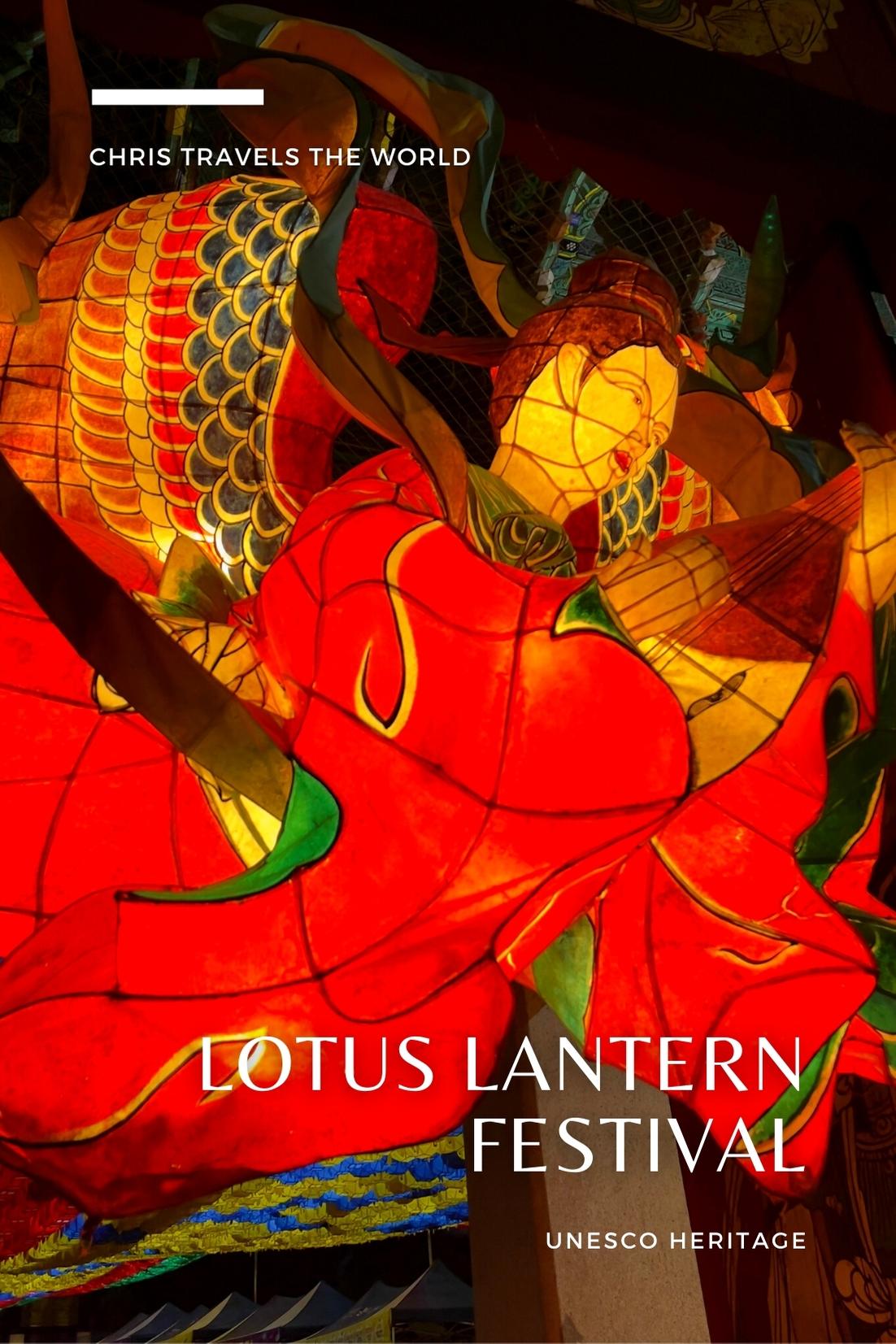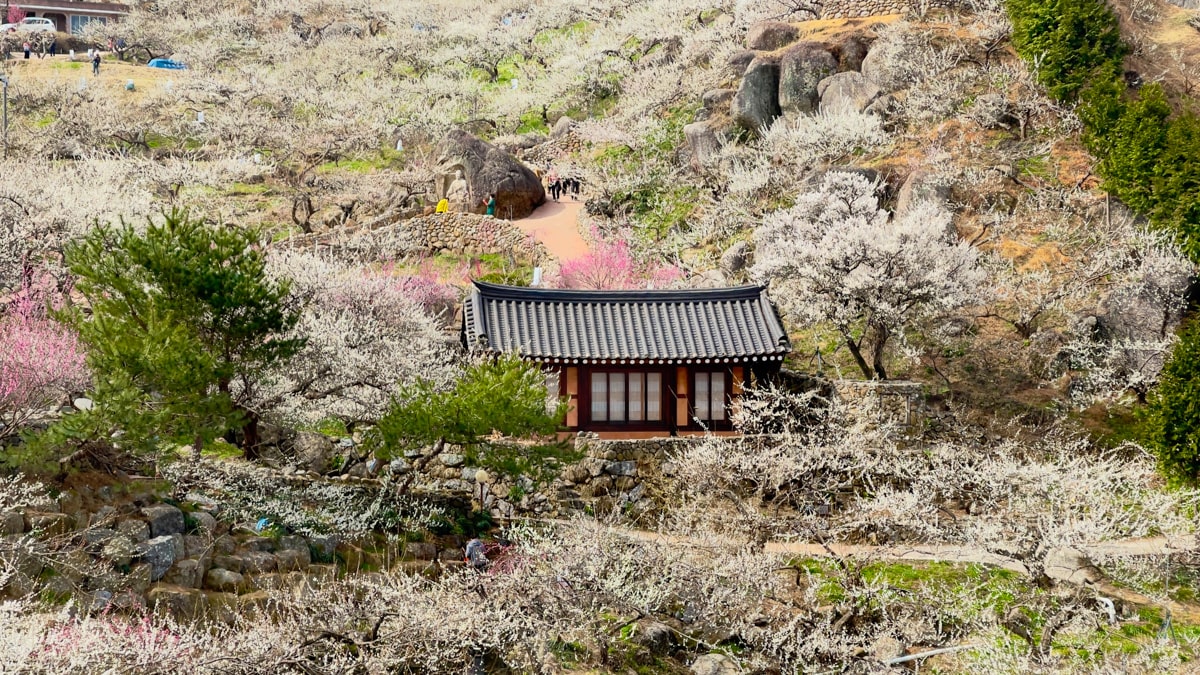
This post contains affiliate links.
antern Lotus Festival is one of the oldest existing festivals not only in Korea but in the world. Its origins date back to Shila Dynasty, where the lantern festival was established to celebrate Buddha’s birthday. It continued during the Goryeo Period when Buddhism became the state religion. From Joseon till these days, the Lotus Lantern festival was observed in one form or another.
The festival celebration spans across several days, with activities concentrated in downtown Seoul and around the main Buddhist temple – Jogyesa Temple and Bongeunsa Temple. The Festival starts with the lighting of the mega-sized Grand Ornate Lantern located in SeoulPlaza. Colorful lanterns are on display all over the city and especially around the Buddhist temples showing beautifully shaped lanterns of dragons, tigers, elephants, the four heavenly kings, and pagodas.
The culmination of Buddha’s Birthday celebration is the traditional Lantern parade that takes place late in the evening, starting from Dongguk University and finishing at Gwanghwamun Square.

Contents
Buddhist Temple Lantern Decoration
Several weeks before Buddha’s Birthday, the temples around the city and all over the country are decorated with colorful lanterns. I absolutely love this tradition as it’s a constant reminder that there’s a fascinating Buddhist Temple just a couple of blocks away waiting to be discovered. The yard infant of the main prayer hall is usually where lanterns are arranged on a particular construction to keep them above the visitors’ heads. In the past, all lanterns were handmade out of hanji paper (Korean traditional paper), but these days out of practicality and economic reasons, most lanterns are plastic.
Most of the significant temples have a unique ornate lantern that might be a magical creature, deities associated with Buddhism, or a beautiful lotus flower that’s made of colored paper and light at night. This unique lantern is displayed at the temple and then carried at the Lotus Flower parade in front of volunteers dressed traditionally and representing the temple.



Eoulim Madang – Buddhist Cheer Rally
To warm-up, celebrate, and honor Buddha, monks, Buddhist believers, volunteers, and curious tourists, gather at Dongguk University Stadium for a cheer rally. Most participants are dressed colorfully in traditional hanbok dresses. There are lots of dance performances and some speeches from honorable Buddhist representatives. Followers representing specific temples or Buddhist schools get together and get ready for the ultimate celebration – the parade through the streets of Seoul. Every group stands out with its own design of their lanterns.
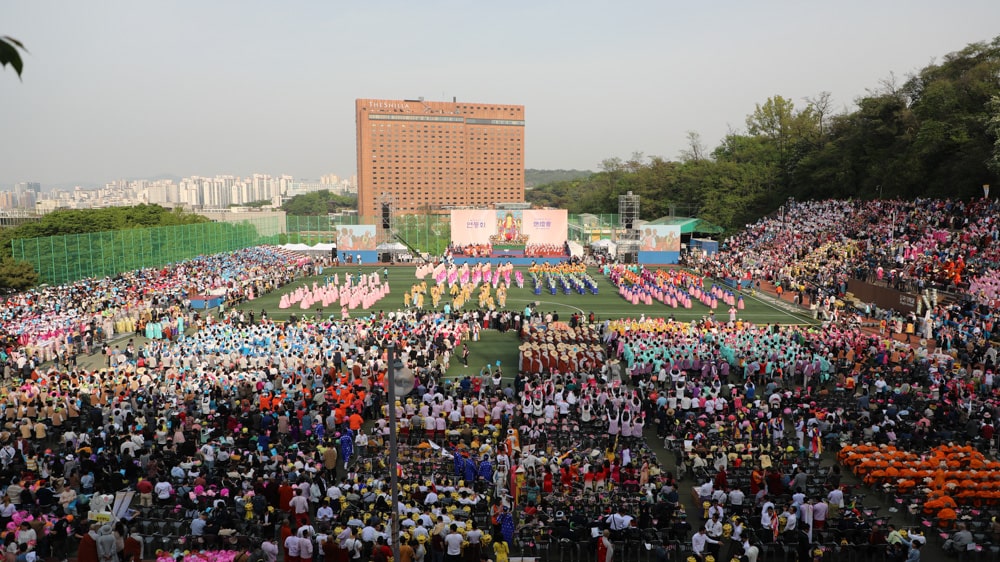
Everybody is welcomed at this celebration, so feel free to join the festivities.
Lotus Lantern Parade
Starting from Dongguk University Stadium at 7 PM, the procession slowly moves to Jongno Street, where multitudes of spectators are lined up along the street to witness the colorful parade. Certain sections along the road are arranged with seats, so if you are lucky to grab a chair, you can enjoy the hours-long parade in great comfort. Each group is announced and identified with a sign stating its affiliation – a Buddhist temple, school, or organization.


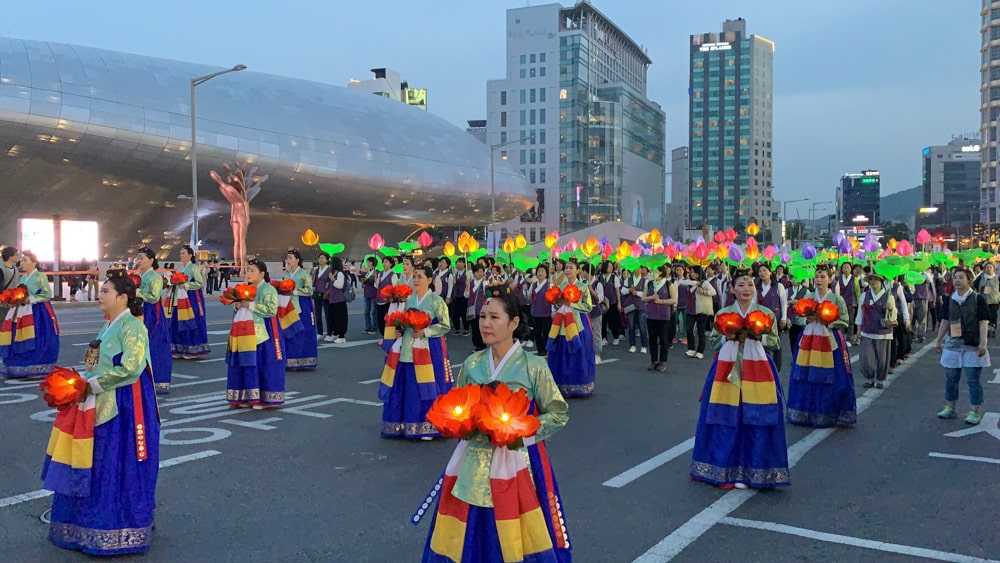
If you prefer to watch the lantern parade in daylight, the best way is to find a spot around Dongdaemun where the parade starts. Lanterns are super beautiful at down, so to see all groups with their lanterns light up, go down the road and find a spot around Jonggak Station.
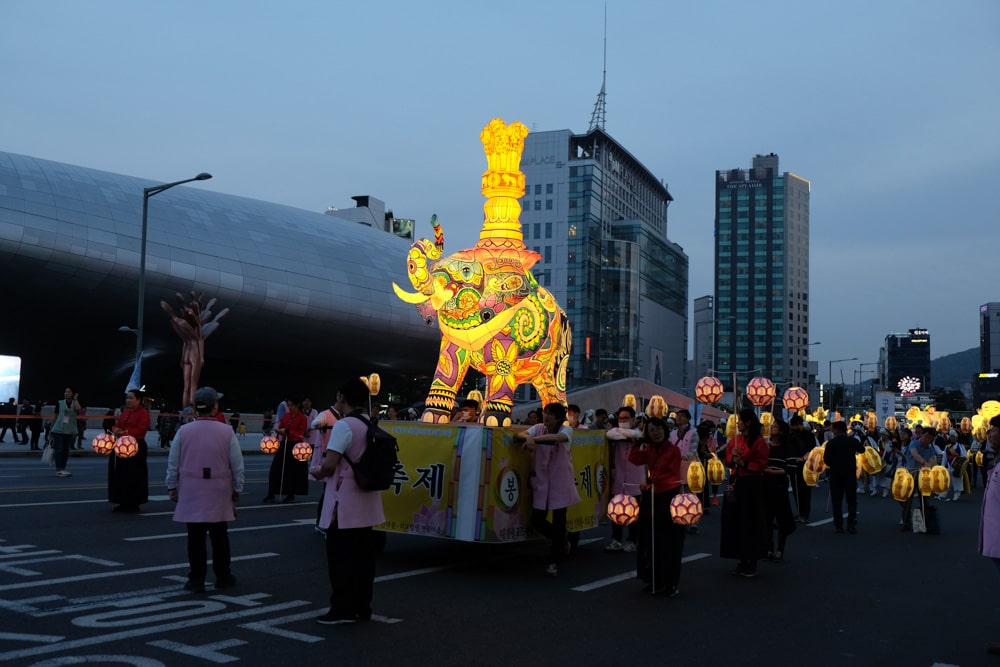
Pre Covid-19, international participants were representing friendly Buddhist organizations from all over the world.
Grand Ornate Lanterns
A special highlight of the parade is the display of the grand ornate lanterns, which are beautifully decorated and vary in size. Some of the lanterns are so big they have to be carried on special trucks.

There are tigers, elephants, various dragons, turtle ship boats, the figures of the Four Heavenly Kings, famous pagodas, even modern popular characters.
Hoehyang Hanmadang – After Parade Celebration
The parade finishes with a grand celebration with a big stage and lots of performances at the intersection outside of Jonggak Station. In some previous editions, the celebration was at Gwanghwamun Square. The concert is designed to attract the younger crowds, but there’s no limitation in attendance in any way.

Buddhist Culture Experiences
There are tons of Buddhist culture events designed to light on what Korean Buddhism is, what’s its origin, believes, and traditions during the day in various spots. During the day, most of the events are concentrated around Jogyesa Temple, the Temple Stay Information Center across the street and The Buddhist Museum on the temple’s premises.



You can learn how to make your own paper lantern, do Buddhist prayer bead bracelets, paint bowls, learn about Korean Buddhism history, and join dance lessons. There are unique experiences designed for kids as well.
Yeongdeungnori – Mini Parade around Jogyesa Temple
Even though not as big and exciting as the grand parade at night, the Yeongdeungnori is a final lantern procession around Jogyesa Temple. It might be a great choice if you prefer to be out during the day and spend less time watching and more time trying out different experiences.

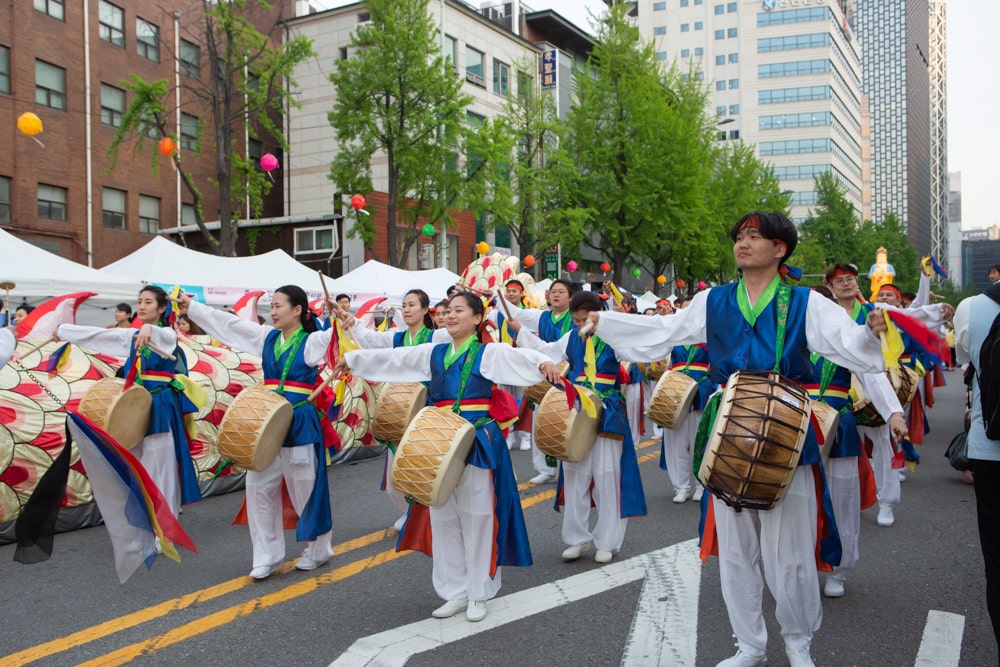

History of Lotus Lantern Festival
The first records of the Festival date to the 12th year of King Jinheung of Silla (551). At that time, Buddhism was the state religion of the Silla Kingdom. The Festival has been organized in the largest temple of that time – Hwangmyongsa Temple under the king’s patronage. After introducing Buddhism to Korea, lantern festivals became important cultural events celebrated by both royalty and commoners.
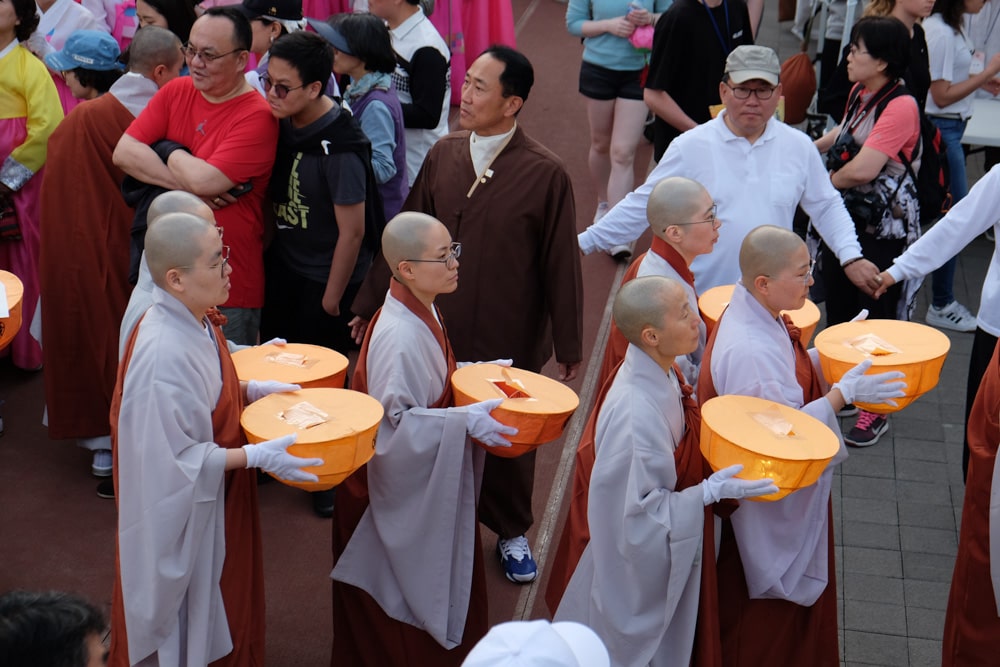
The lotus lantern festivals of Silla and Goryeo were predominantly Buddhist religious events connected to the celebration of Buddha’s birthday. The Festival was held around New Year in February, and after Silla, during Goryeo Period, it was moved to be celebrated on Buddha’s birthday in the middle of May. The king will pay a visit to a temple that day, and a special ceremony was held to commemorate that.


During the Joseon Period, Korea adopted Confucian ideology, and Buddhist temples are in decay, and Buddhist practices and traditions were disregarded by the ruling elite. Due to Buddhist persecutions in the first half of the period, the Festival was mainly a folk event celebrated nationwide without the blessing of the Confusion Joseon state.
Changing folk traditions and practices weren’t that easy, which made it possible for the celebration of the Lotus Lantern Festival to continue even without the official support and recognition of the Joseon state. Celebrations were scaled down. In spring, children will cut paper to make flags, make wooden fish and drums, and try their best with materials in hand to do lanterns. The lanterns were then put on palls in each house and people in the village would go around and enjoy the lanterns that eliminated the dark spring nights. The pure Buddhist lantern celebration was mixed with agricultural rituals.

There is evidence that lantern events were held in Cheonggyecheon Stream during the late Joseon Period.
During the Japanese Colonial Period, the Festival regained popularity.
The celebrations were in a way influenced by the “Hana Matsuri” Japanese-style Buddha Birthday celebration. It’s questionable if the actual lantern parade procession dates from this time, or it has its roots in the more early celebrations during Goryeo, where the king was involved in a massive procession to a Buddhist temple.
Lotus Lantern Festival in 2021
Due to COVID19, the Festival will be held, but primarily online. This year lanterns will be displayed in several locations across Seoul – at Jogyesa Temple, Bongeunsa Temple, Cheonggyecheon Stream, and City Hall.

Lotus Lantern Festival in UNESCO Heritage List
The lantern festival was added to the UNESCO Intangible Cultural Heritage List at the end of 2020. That’s massive recognition for the Festival and will make its future celebration even more vibrant and internationally charged.
Schedule for 2021 Lotus Lantern Festival
Exhibition of Traditional Lanterns
14~30 May
Jogyesa Temple, Bongeunsa Temple, Cheonggyecheon Stream
Yeondeung Dharma Ceremony
Commemorative Ceremony of UNESCO Heritage Registration
May 15, 18:00 – Jogyesa Temple (YouTube Live)
Lotus Lantern Parade (online)
May 15, 20:00
Traditional Cultural Events
May 15 ~ 19
Cultural Performances
May 15 ~ 19
Address
Jogyesa Temple | 조계사
55, Ujeongguk-ro, Jongno-gu, Seoul
서울특별시 종로구 우정국로 55
Love my content? Support me with a cup of coffee:
Join my travel community:
Did you enjoy Lotus Lantern Festival post? Share it on Pinterest!
